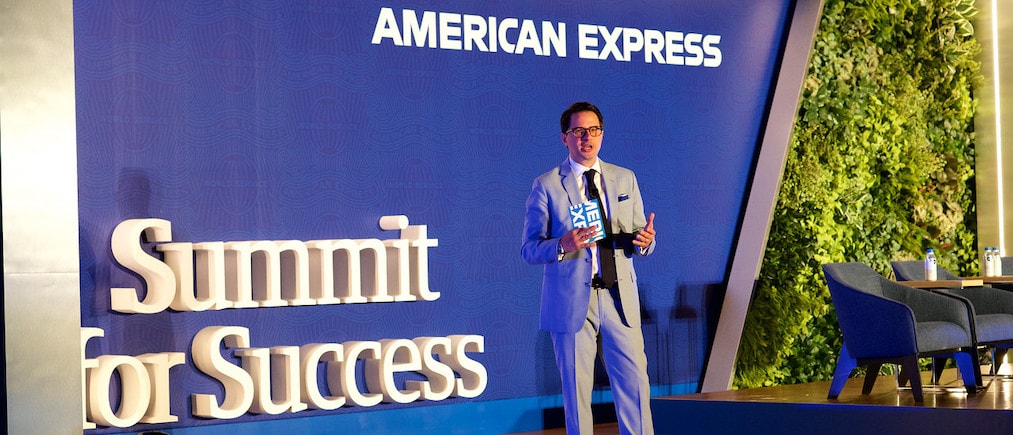After nine months of working from home, or WFH, and with many more months peeking at us over the horizon in 2021, I've been thinking a lot about what’s different. We’re working more than ever, yet some of us can’t help but feel that we are not firing on all cylinders. We’re spending more time speaking with colleagues across video chat and instant messenger yet at times feel distanced and disconnected. There’s a vague sense that something is not quite right with this new way of work, but we don’t know how to articulate it, let alone how to fix it.
For the bulk of us who’ve spent our careers working in real-life offices, the only productivity and mental health tips and tricks that we know were developed for the concrete ‘dividing lines’ that exist in the office and thus haven’t translated well to WFH. At the office, for example, a little physical distance went a long way—we could psychologically ‘turn work off’ by getting up and walking away from our desks to change the scenery, chat with colleagues, or grab a coffee. Distance between us and our computers worked wonders too.
At home, however, those traditional breaks don’t work as well because of how entangled our home and work lives have become. You can step away from your workspace and go into your kitchen to refresh with a deep breath and a snack, but for some reason that distance doesn’t feel like it’s enough to complete the full reboot you were hoping for. Even movie night afterhours with the kids, enjoyed from the comfort of the home living room, can feel a little extra crowded with the specter of work lurking just around the corner in the office. And that’s just the start of what’s missing from our old rhythm.
Intermissions Force Us to Disconnect
Before COVID, or BC, intermissions emerged from the natural buffers that separated work and life. For me, they came in the form of my commute. Each day started roughly the same. I’d wake up, exercise, shower, and then grab a bite to eat with my wife and kids. After the kids were ready for school, I’d commute to work via subway, giving me the chance to catch up on news, listen to a podcast, get my thought together for big meetings or even just daydream, which any parent and professional can agree is a critical task most days.
Once I’d arrived at the office, I’d energize with a coffee and kick off what seemed like an endless barrage of meetings: in big rooms, little rooms, virtual meetings from my desk, catch-ups over the phone—even random run-ins with colleagues on the way to refill my coffee had the chance of evolving from casual conversation to impromptu meeting. This continued until the end of the workday, when I’d be looking forward to the commute home. The train was an inviting redoubt that offered protection from the back-to-back meeting rush, giving me a chance to process and decompress before catching up on the events and updates of my wife’s and kids’ days during dinner.
COVID, however, changed everything. Personally, working from home reduced my commute from 35 minutes to 15 seconds. As soon as the kids start school, the meetings—which now all take place virtually—begin. I find myself staring at people’s faces inside boxes on my computer screen—two, four, six, maybe more—for hours on end. I have to make time to dash to the bathroom in between calls and find ways to divide and conquer supporting our new noisy co-workers—our kids—with my wife, who is running her own business from home. I take a handful of breaks, but they aren’t intermissions separate from my workday.
As soon as we’re up, we’re on, and with instant and always-on access to email, text and calls and nowhere to go, there isn’t a moment where we can take a square break and turn off. In fact, many people feel guilty saying they can’t be available for a meeting because everyone knows we are available, every minute, every day, sitting in the same. exact. place. We have instant messaging tools that fail to separate urgent requests from asks that don’t need immediate attention. For whatever reason, we feel compelled to answer emails after hours, perhaps fearing that working at home hadn’t yielded the same productivity we would have had had we been in the office. After more than nine months of this, many of us are embracing the reality of this way of working— in my opinion, it can be unsustainable, and we’re burned out and less focused.
In trying to figure out how to fix this, I spent a lot of time thinking about the before-COVID era. Back then, I was enjoying roughly three hours a day of breaks between my commute to work and back home, coffees, lunch, and workouts. I pulled out my calendar from last year and realized that, on average, I was also spending about 20 hours a month in airports and on planes. A long flight across the country—or overseas to London or Tokyo—became an expanded version of my daily commute: invaluable time to think more deeply about long term plans and strategies or to write down those key insights and notes that you just couldn’t find time for on regular days.
Though I don’t miss spending all that time away from my family, I now recognize what a luxury it was to have those opportunities to reflect and recharge—these supercharged breaks, essentially, are forced intermissions, where we had no choice but to accept limited access to the outside world and just be alone with ourselves and our thoughts. If we want to summon the best versions of our professional and personal selves, I think we need to find a way to emulate those long-gone, forced intermissions. They need to be moments where we commit to zero access to work—no email, no texting with colleagues, no spending any energy on work whatsoever.
The Health Benefits of Intermissions
Researchers have confirmed that video fatigue is real. Unlike an in-person meeting where it’s not so awkward to stand up to grab a cup of coffee or to stretch your legs, video calls force you to stare into your screen looking for non-verbal cues like facial expressions, the tone and pitch of the voice, and body language in the faces in front of you. That takes energy. Compound that by the fact that these meetings are back-to-back and only require a mouse click to start, and you’re left with an energy debt that keeps growing.
After more than nine months of WFH, some of us are embracing the reality of this way of working—in my opinion, it can be unsustainable, and we’re burned out and less focused.
Without giving ourselves blocks of time to think, we default to spending all our time on “urgent” short-term deliverables. That results in what psychologists say is a lack of motivation to pursue vital strategic thinking that drives long term results. In other words, the most important work suffers, while the most current work gets satisfied. Even if you’re a small business owner fighting to keep your business alive, you need to start looking further out if you want to be successful in the long run. If you’re driving your car only looking two feet in front of you, you’re probably going to get lost.
Studies show that some of our best ideas actually come when we’re doing things unrelated to our work—like walking your dog, working out, or taking a shower. Psychologists say that these activities that free us from constant work allow us to gain the kind of “cognitive surplus” where creativity thrives. There’s real power in taking and enjoying a time out.
The Case for Working Smarter
Every company out there is looking for ways to increase productivity. The answer, despite how counterinitiative it might seem, is to actually slow things down by scheduling intentional intermissions.
The pandemic hit us so fast that it forced us to sprint to survive. But we need to recognize that we are really running a marathon, and we need to pace ourselves better if we want to shift from surviving to thriving. It’s similar to Stephen Covey’s woodcutter in his bestselling book, The Seven Habits of Highly Effective People, who becomes less productive the more he cuts because he doesn’t take the time off to sharpen his saw.
We need to find ways to create the space our brains need to reflect on the experiences from our day so we can see the bigger picture and work smarter, not harder. The answer is to schedule regular intermissions where we can sharpen our saws. As a 2011 study published in the journal Cognition found, even short diversions from work can vastly improve our effectiveness at tackling that task.
The first step to embracing intermissions is discipline. If we agree it’s important, we have to make it happen, and we have to reject the instinct that makes us feel that intermissions are moments of unproductivity. For instance, I’ve begun to make time to ride my bike in the morning and in the evening during the times I used to commute. That gives me a break and a change of scenery that let’s my brain reboot from staring at those virtual squares.
Another pervasive trend we’re seeing is that many of us are deferring much needed vacation time we normally would be using during the spring and summer months. That made sense because we all embraced the “all hands on deck” mentality we needed to react to the pandemic. But this is time we’re leaving on the table. It’s a missed opportunity to break away from the daily grind and gain a new perspective.
Granted, I’m not quite ready to head to the beach or to catch an overseas flight. Instead, I’m taking my kids on a road trip to visit their grandparents—and my wife is staying at home. That’s going to be her chance to take a break from her new co-workers and to spend some time thinking about how she can work “on” her business rather than just relentlessly work “in” it. That kind of time has become priceless—but we all need more of it.
If you find yourself suffering from meeting fatigue, or even that you feel like you’re lacking your usual level of creativity, schedule intermissions. In fact, schedule a lot of them. You had the time pre-COVID and you need it more now than ever. You’ll be healthier and more productive as a result. It’s time to take back the critical intermissions that made your show go on.



